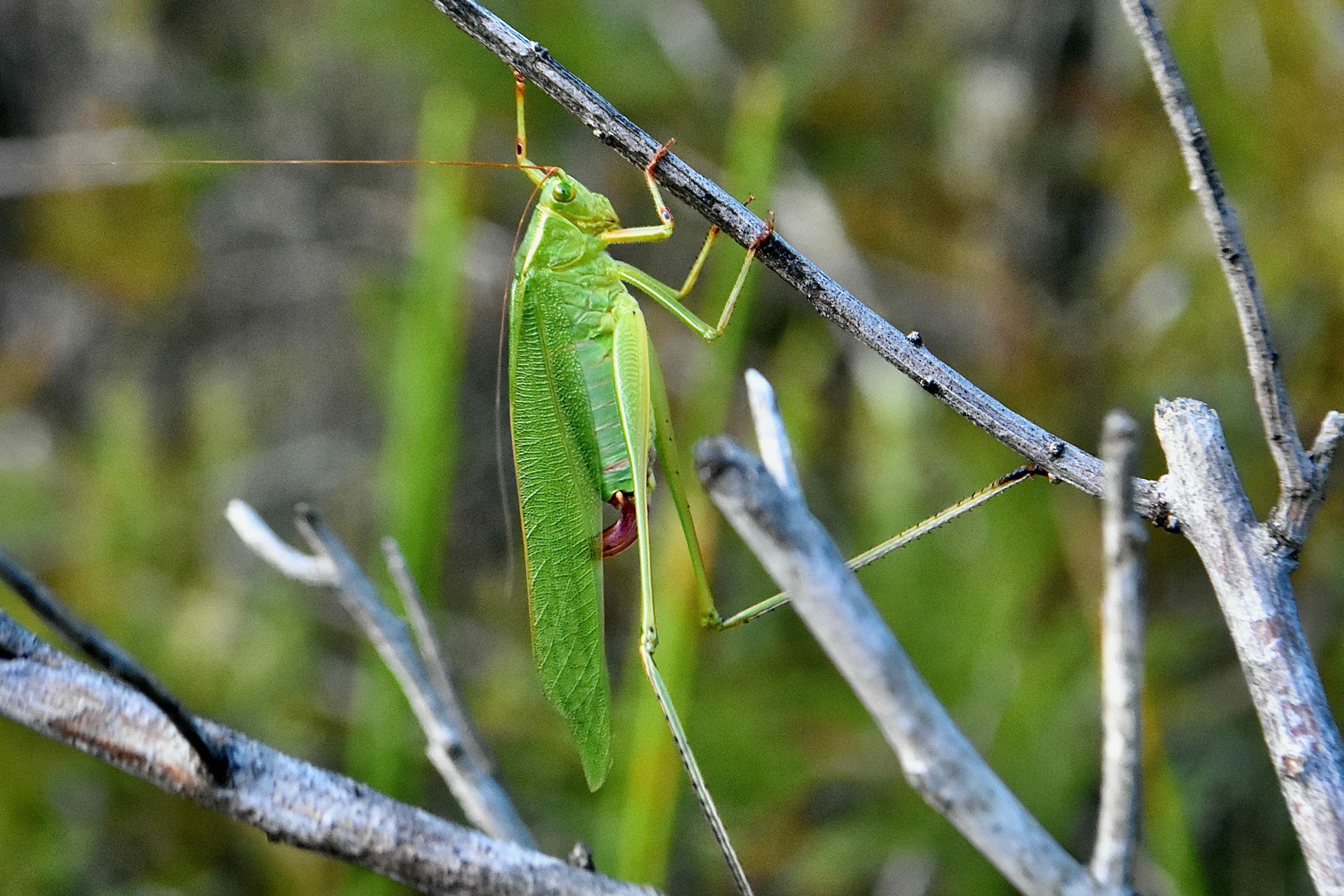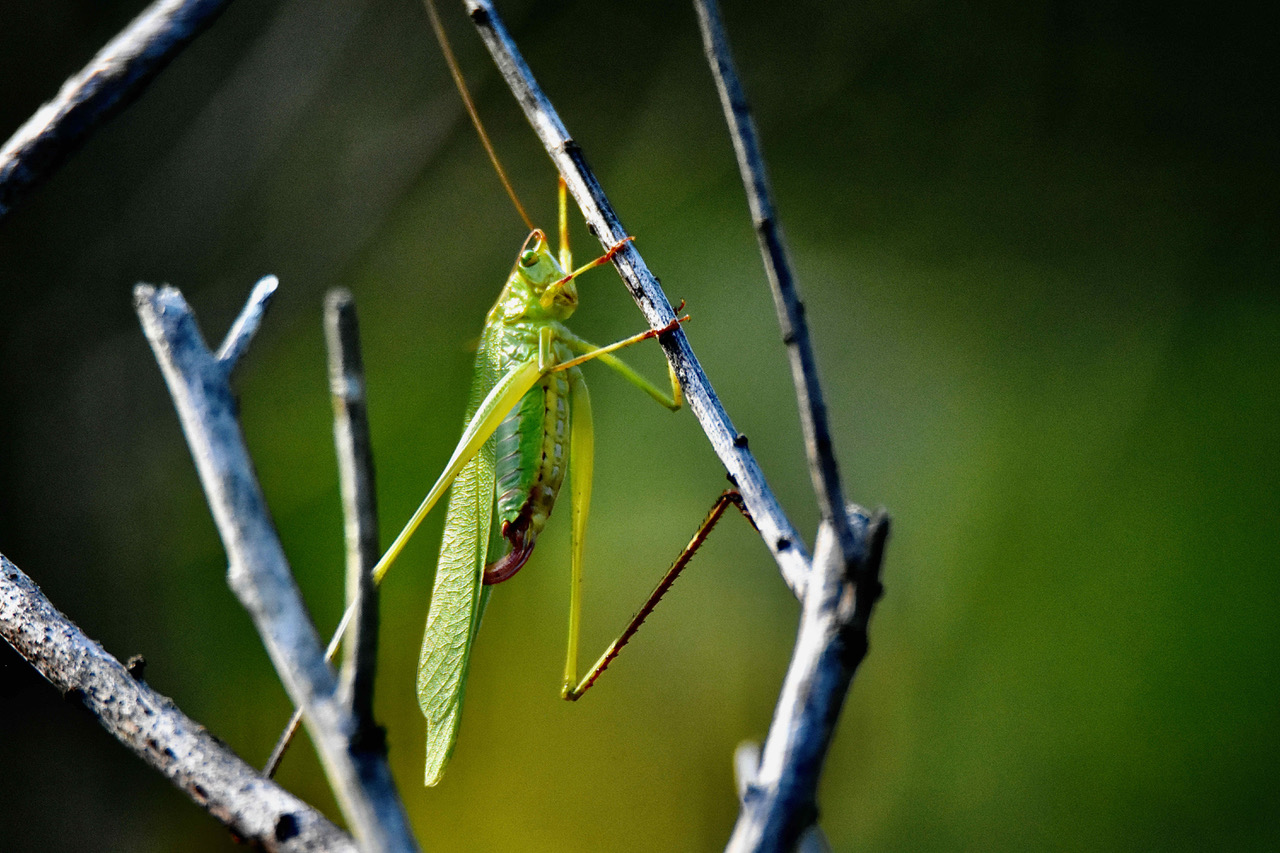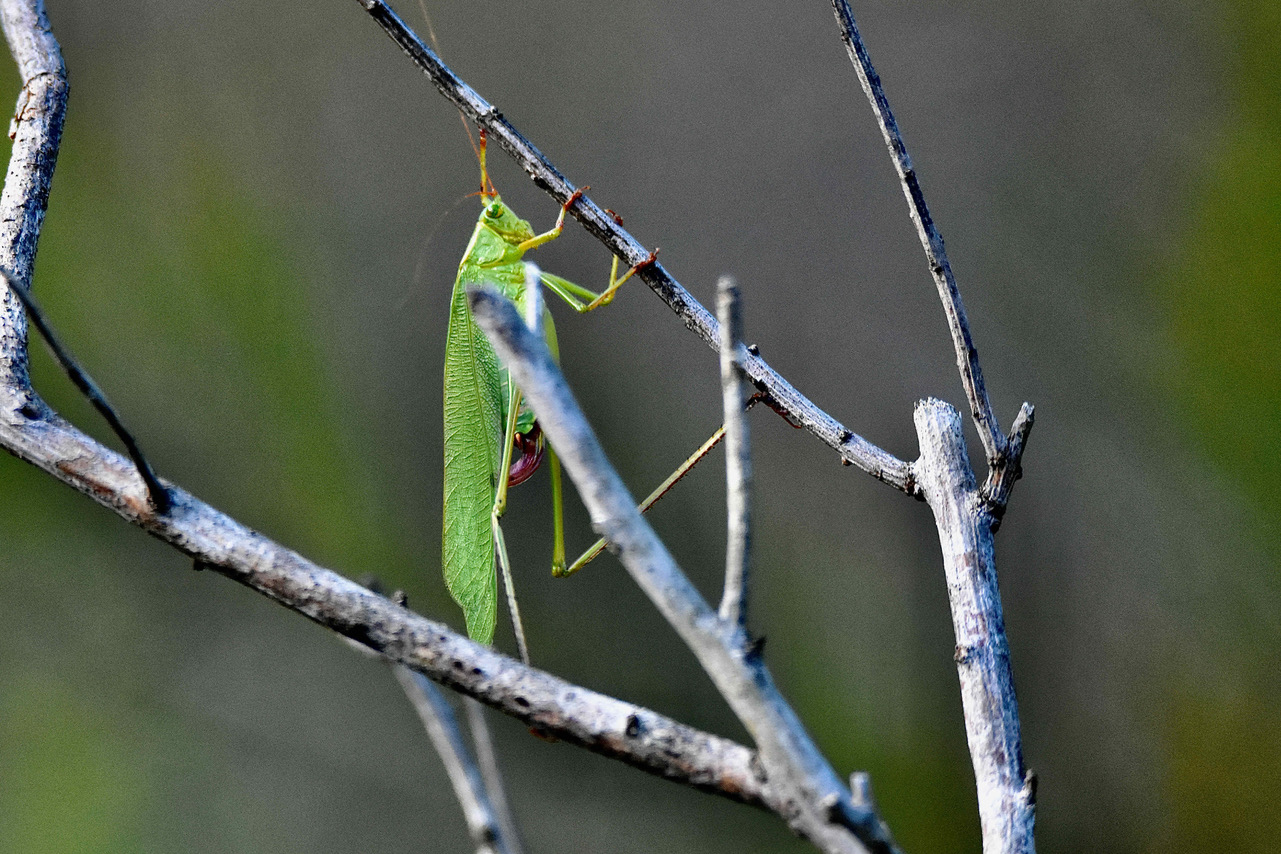
A Scudder's bush katydid, photographed at Delaware Scrub Natural Area, Jupiter, Palm Beach County, in September 2018
Bush katydids look so much like grasshoppers that naturalists once considered them to be grasshoppers — longhorned grasshoppers — but they are creatures unto themselves.
Family: Tettigoniidae; Genus: Scudderia.
We’re not quite sure the species of katydid in our photo. In fact, we’re not sure at all, but if some put a gun to our head and made us guess, we’d say fork-tailed, S furcatta, but I certainly wouldn’t take that to the bank.
The looks of individual bush katydid species are so similar that it can be easier to identify them by the distinctive “songs” each makes rather than by their appearance.
Males make the songs by rubbing certain parts of their left and right wings together. The purpose, of course, is to attract a mate. The songs are described as buzzs, rasps or ticks. Extremely loud buzzs, rasps and ticks.
Fun fact: Katydids get their name from the song that the true katydid Pterophylla camellifolia makes: katydid, katydidn’t. Apparently they can’t make up their minds.
Bush katydids are leaf green, about an inch-and-a-half to two inches long. It’s not hard to see why they were once considered “long horn” grasshoppers. Take a look at those, long, whip-like antennae.
The first two pairs of legs are relatively short; the final pair, muscular, wirey and incredibly long. The wings are also long, narrow and cover the body, which helps separate the bush from other katydids.
By the way, the curled, brownish tip at the end of the abdomen is a ovipositor, meaning our "guy" is a girl. The ovipositor is used to deposit eggs.
Bush katydids spend their day motionless among leaves, which makes them difficult to spot. Toward sunset, they start to feed; at night, they begin to “sing,” which, oddly enough makes them easier to spot with the help of a flash light and a sharp ear. Focus on the song, where it’s coming from, then try to spot the guy — the males do the singing — with a flashlight. If you’re lucky, you might catch a glimpse of one rubbing its wings.
Bush katydids are also known as bush crickets or bushcrickets.
Delaware Scrub Natural Area



